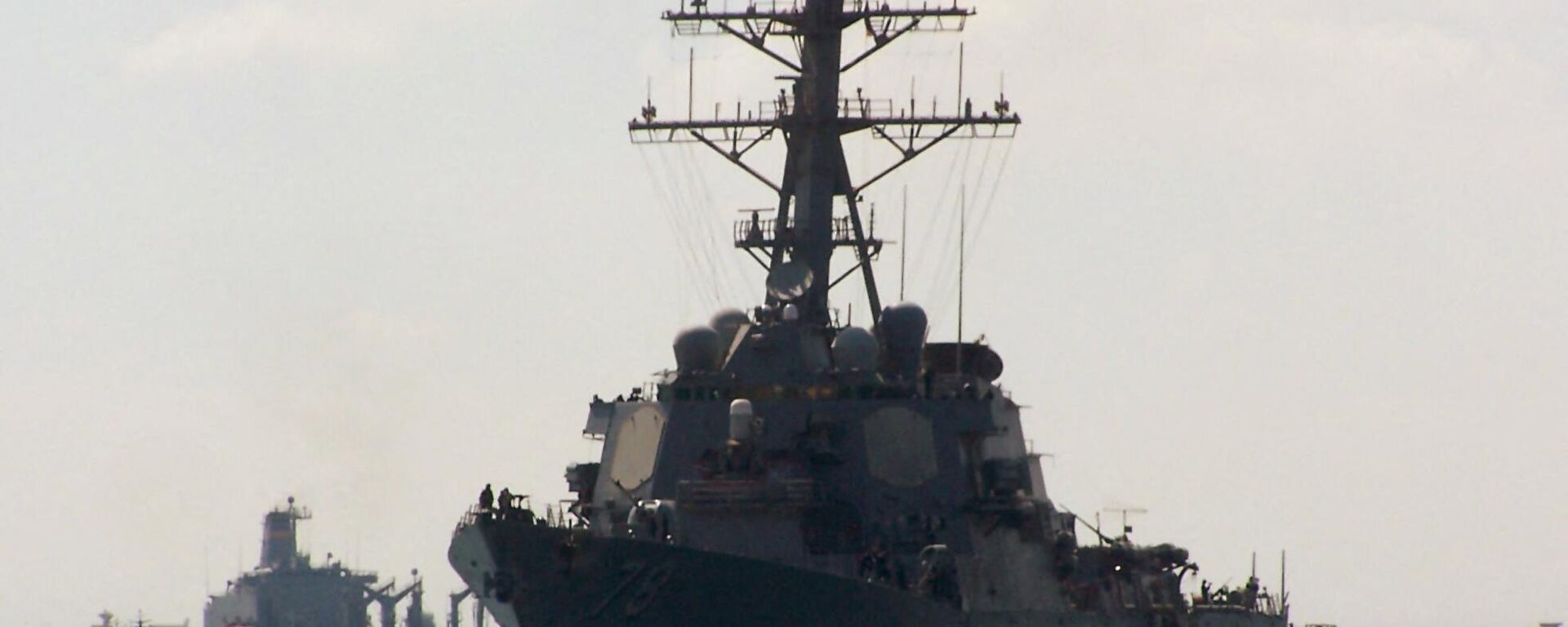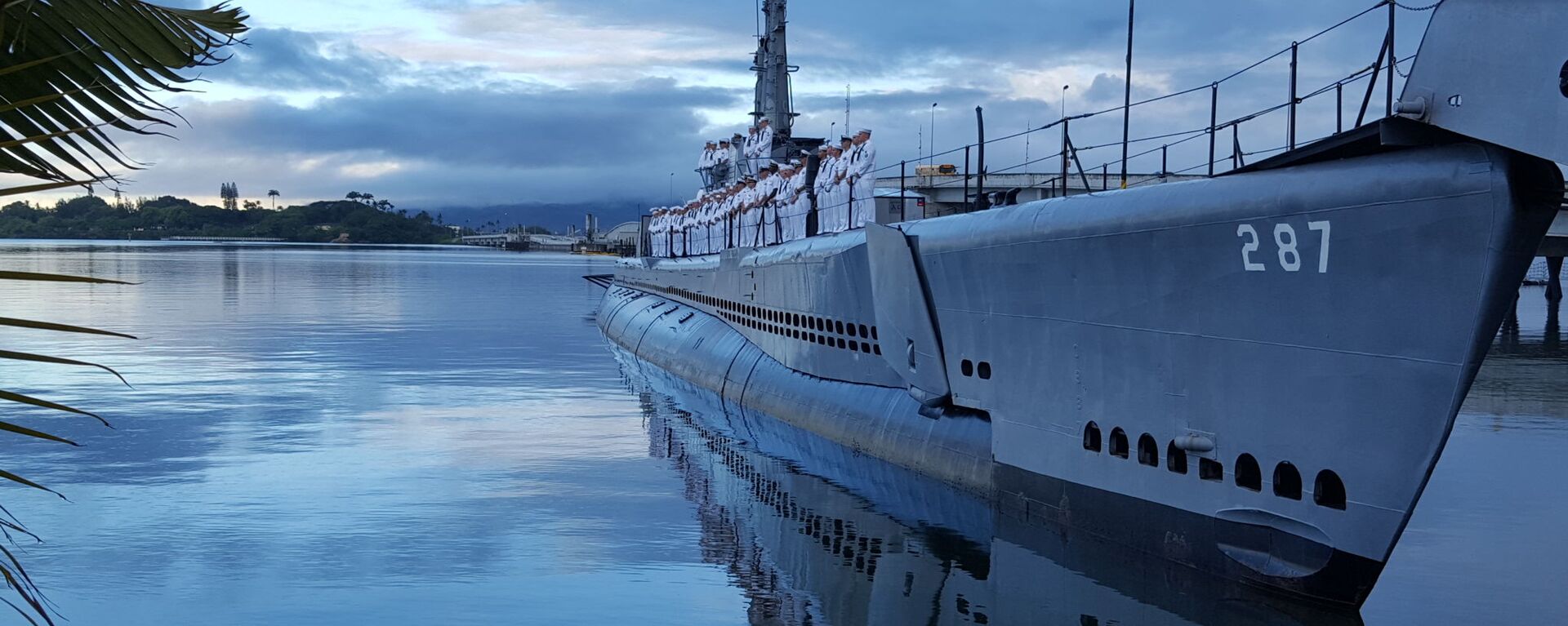https://sputnikglobe.com/20240225/pouring-salt-in-the-wound-barrel-graveyard-research-reveals-a-bad-versus-worse-result-1116960198.html
Pouring Salt in the Wound: Barrel Graveyard Research Reveals a ‘Bad Versus Worse’ Result
Pouring Salt in the Wound: Barrel Graveyard Research Reveals a ‘Bad Versus Worse’ Result
Sputnik International
A pollution site off the coast of Los Angeles is home to thousands of decaying barrels once thought to contain the pesticide Dichlorodiphenyltrichloroethane (DDT). However, according to a study that was published on Wednesday, the barrels are now believed to contain tritium and carbon-14.
2024-02-25T04:52+0000
2024-02-25T04:52+0000
2024-02-25T04:52+0000
americas
toxic chemicals
pollution
contamination
water pollution
radioactive materials
radioactive water
radioactive waste
radioactive material
radioactive substances
https://cdn1.img.sputnikglobe.com/img/07e6/08/04/1098127396_0:0:1777:1000_1920x0_80_0_0_0912531d5d41b267f149ef9e2e6d58a7.png
A pollution site off the coast of Los Angeles is home to thousands of decaying barrels once thought to contain the pesticide Dichlorodiphenyltrichloroethane (DDT). However, according to a study that was published on Wednesday, the barrels are now believed to contain tritium and carbon-14.“The question we grapple with now is how bad and how much worse.”According to the EPA, tritium is a form of hydrogen that is radioactive, and is “produced naturally in the upper atmosphere when cosmic rays strike atmospheric gasses”. But it can also be “produced by man during nuclear weapon explosions in reactors intended to produce tritium for nuclear weapons, and by reactors producing electricity”.Records reveal that it was standard practice for hospitals, labs and other industrial sites to discard barrels of toxic chemicals and radioactive waste into the ocean from the 1940s through the 1960s.It is believed that the reported isotopes, including the tritium, would have decayed since it was dumped at this site. But researchers are still wary of what other toxic materials could have been dumped at the site.And how many barrels are still leaking radioactive chemicals into the ocean still remains a mystery. A map from the International Atomic Energy Agency estimates that more than 56,000 barrels of radioactive waste may have been dumped into the Pacific Ocean, off the California coastline, between 1945 and 1970.This follows a discovery of more than 25,000 “barrel-like” objects which were found using sonar in 2021, following an initial discovery of the barrel “graveyard” a year prior. Other toxicities could be even further reaching, as researchers are still unsure of how wide the dumping site actually is.Researchers have been trying to track down the source of the DDT pollution which is still having adverse affects on ocean life some 3,000 feet beneath the surface across the seafloor. The pesticides, banned in 1972, have been linked to an aggressive cancer harming California sea lions and, being a "forever chemical", has managed to work its way up the marine food chain.
https://sputnikglobe.com/20240128/us-navy-reportedly-failed-to-warn-veterans-of-radiation-exposure--1116441535.html
https://sputnikglobe.com/20240107/wwii-era-munitions-discovered-off-southern-california-coast-at-dumping-site-1116024131.html
americas
Sputnik International
feedback@sputniknews.com
+74956456601
MIA „Rossiya Segodnya“
2024
News
en_EN
Sputnik International
feedback@sputniknews.com
+74956456601
MIA „Rossiya Segodnya“
Sputnik International
feedback@sputniknews.com
+74956456601
MIA „Rossiya Segodnya“
chemicals, radioactive waste, radioactive toxins, radioactive pollution, ocean pollution, water pollution, water contamination, contaminated water, pacific ocean, los angeles, radioactive water, radiological impact, radioactive contamination, tritium, polluted water, chemical waste, tritium waste, ddt, carbon-14
chemicals, radioactive waste, radioactive toxins, radioactive pollution, ocean pollution, water pollution, water contamination, contaminated water, pacific ocean, los angeles, radioactive water, radiological impact, radioactive contamination, tritium, polluted water, chemical waste, tritium waste, ddt, carbon-14
Pouring Salt in the Wound: Barrel Graveyard Research Reveals a ‘Bad Versus Worse’ Result
It was previously believed that the barrels contained the dangerous pesticide known as DDT, but a new study shows the barrels could contain something that makes this predicament even more deadly.
A pollution site off the coast of Los Angeles is home to thousands of decaying barrels once thought to contain the pesticide Dichlorodiphenyltrichloroethane (DDT). However, according to a
study that was published on Wednesday, the barrels are now believed to contain tritium and carbon-14.
“This is a classic situation of bad versus worse. It’s bad we have potential low-level radioactive waste just sitting there on the seafloor. It’s worse that we have DDT compounds spread across a wide area of the seafloor at concerning concentrations,” said David Valentine, the study's lead researcher.
“The question we grapple with now is how bad and how much worse.”

28 January 2024, 00:46 GMT
According to the
EPA, tritium is a form of hydrogen that is radioactive, and is “produced naturally in the upper atmosphere when cosmic rays strike atmospheric gasses”. But it can also be “produced by man during nuclear weapon explosions in reactors intended to produce tritium for nuclear weapons, and by reactors producing electricity”.
Records reveal that it was standard practice for hospitals, labs and other industrial sites to discard barrels of toxic chemicals and radioactive waste into the ocean from the 1940s through the 1960s. It is believed that the reported isotopes, including the tritium, would have decayed since it was dumped at this site. But researchers are still wary of what other toxic materials could have been dumped at the site.
And how many barrels are still leaking radioactive chemicals into the ocean still remains a mystery. A map from the International Atomic Energy Agency estimates that more than 56,000 barrels of radioactive waste may have been dumped into the Pacific Ocean, off the California coastline, between 1945 and 1970.
This follows a discovery of more than 25,000 “barrel-like” objects which were found using sonar in 2021, following an initial discovery of the barrel “graveyard” a year prior. Other toxicities could be even further reaching, as researchers are still unsure of how wide the dumping site actually is. Researchers have been trying to track down the source of the DDT pollution which is still having adverse affects on ocean life some 3,000 feet beneath the surface across the seafloor. The pesticides, banned in 1972, have been linked to an aggressive cancer harming California sea
lions and, being a "forever chemical", has managed to work its way up the marine food chain.

7 January 2024, 04:09 GMT




